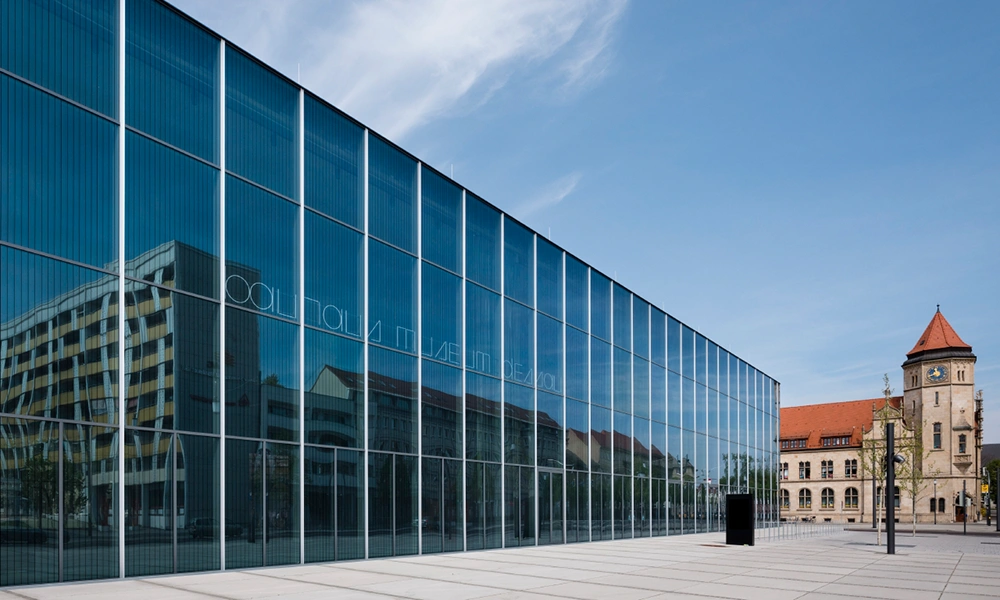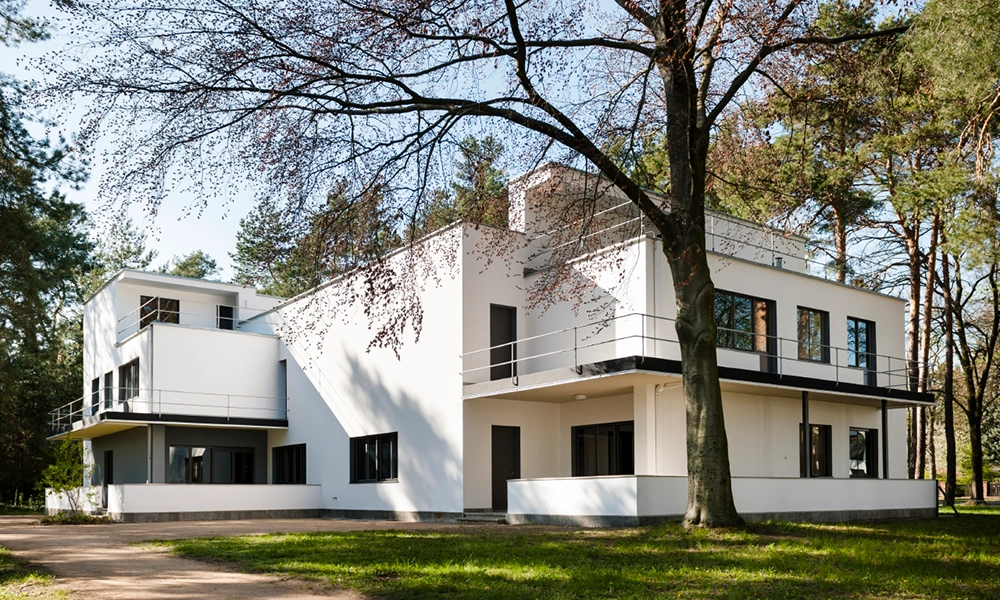
Leaving old traditions behind and creating new visions for the future – that was the agenda of many forward-thinking artists and architects at the beginning of the 20th century. Together, they shaped a way of building which came to be known as “Bauhaus”. But what exactly is Bauhaus, and why does it still have such a huge impact today?
“Only an idea has the power to spread as widely.“ – Mies van der Rohe, director of the Bauhaus.
A sense of cultivated coolness and straight simplicity – phrases like these sound very telling in theory. But figuring out what lies behind that requires a lot more insight. So, why is Bauhaus architecture described that way? And how did a novel idea from 1919 become one of the most influential movements of the 20th century? We’ll take a closer look at these questions in this article.
What is the Bauhaus style known for?
In discussions around Bauhaus, we often hear adjectives such as “neutral”, “straightforward“, or “reduced“ – all in reference to stylistic elements. Yet the “Bauhaus” is not a specific style by definition. It rather constitutes a modernist school of thought that was developed and taught at three locations between 1919 and 1933: the Public Bauhaus in Weimar, the University of Design in Dessau, and a private academy in Berlin. These institutions set the foundation for what Bauhaus is today: a fusion of different styles, disciplines, and artistic approaches.
What is the Bauhaus movement’s origin?
German architect Walter Gropius, born in 1883, had a vision of combining art and craftsmanship to create buildings with a practical purpose. Following the opulence of the 19th century, he sought to establish a new kind of architecture which put social and communal interests centre stage. Gropius Gropius was convinced that objects should be aesthetic, useful, and accessible for everyone. As the founding father of the Bauhaus movement, he shifted the focus from singular pieces of art to functional items for everyday use.
“Form follows function”: what is special about Bauhaus design?
In order to distinguish a certain type of architecture, we mostly turn to its physical features. Bauhaus, for example, stands out with symmetrical shapes, unusual materials, and complementary colour schemes. But there’s a lot more to this style than meets the eye. To fully grasp what Bauhaus is, we first need to understand the ideological principles behind its visual appearance:
1. Objects are designed by merging craftsmanship, technology, art, and industrial production.
2. In line with the doctrine “form follows function”, the purpose of an object should take precedence over its aesthetics.

Who are the most well-known representatives of Bauhaus?
Referred to as the “masters of form”, various artists shaped the Bauhaus school in their own unique way. The names commonly cited in this context are Oskar Schlemmer, László Moholy-Nagy, Lyonel Feininger, Wassily Kandinsky, and Paul Klee. But these teachers weren’t the only ones who played an important role within the movement.
Referred to as the “masters of form”, various artists shaped the Bauhaus school in their own unique way. The names commonly cited in this context are Oskar Schlemmer, László Moholy-Nagy, Lyonel Feininger, Wassily Kandinsky, and Paul Klee. But these teachers weren’t the only ones who played an important role within the movement. Our understanding of what Bauhaus is today also goes back to students such as Marcel Breuer, who created the legendary steel-pipe furniture and cantilever chair. Many of his peers were equally influential: from Marianne Brandt’s iconic ashtray and Ludwig Mies van der Rohe’s Barcelona chair to the famous “Bauhaus lamp” by Wilhelm Wagenfeld.
What is the Bauhaus legacy for contemporary architecture?
Simplistic, geometrical shapes not only provided the formula for functional craftmanship and timeless product design – they also inspired unprecedented buildings.
In hindsight, the Bauhaus school is what paved the way for modernist architecture. This was not least due to the use of novel materials: at the onset of the 20th century, architects built the first industrialised apartment complexes for socially disadvantaged people based on steel, glass, and concrete.
Today, the German Bauhaus institutions in Weimar and Dessau have earned a spot on the UNESCO World Heritage List. If you’d like to learn more about their history, the Bauhaus Museum in Dessau offers an app that takes you on a digital tour through famous venues.
Why did the Bauhaus school end after 14 years?
In 1924, five years after its inception, the Bauhaus in Weimar had to move to Dessau for political reasons. The movement subsequently saw its heyday between 1925 and 1932. But neither Walter Gropius, who served as the school’s director, nor his successors Hannes Meyer and Ludwig Mies van der Rohe could fend off the increasingly hostile climate.
As the Nazi regime took hold of Germany, the university in Dessau finally had to close its doors for good. Ludwig Mies van der Rohe continued his teachings at a private institute in Berlin for one semester. In 1933 however, he announced that the Bauhaus movement had officially ended.
What is Bauhaus in the 21st century?
2019 marked the 100th anniversary of the initiative which heralded the advent of modernism. Even though the original “Bauhaus” only lasted 14 years, it had an everlasting impact on architecture, design, photography, and fine arts
Its distinct style continues to inspire contemporary projects – from minimalist furniture to cube-shaped Smart Homes.